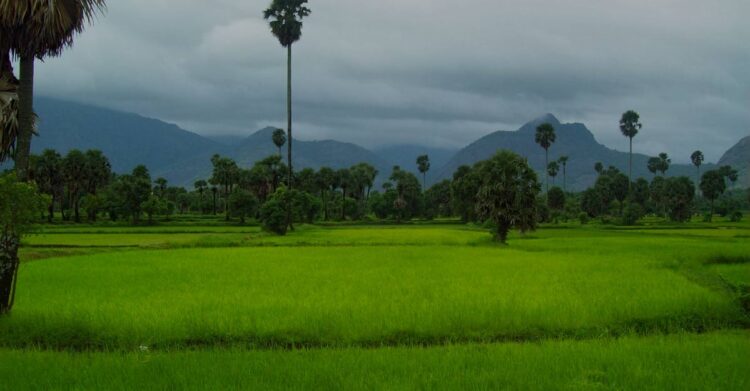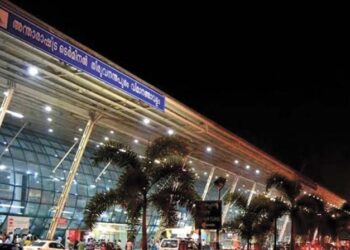Tomorrow, if not today, we will pay for the gaffe of keeping fertile lands infertile. People invested money in lands not with an eye on agricultural wealth creation but for an uncanny price appreciation, which works only on imprudent imaginations.
People with huge money invest in lands for capital appreciation but not for farming! Land is considered a solid asset not because of its sustainable productivity but a notional value. The investors wait for a resale at a manifold price with a desire to be rich in a short period without working hard. How do they manage to get manifold price appreciation without them doing anything? The simple logic, but the wrong economics of money multiplying money works.
Are there some logical reasons that contribute to the price appreciation? No. There is neither a standard land valuation formula nor has there been an attempt to gauge the value based on the productivity of the land to determine its intrinsic value. Then what are the valuation tools they use to determine the future value of the land they purchased? In the prevailing atmosphere accessibility to major towns, road connectivity, water supply and now safety from flooding, etc. are the determiners of land pricing. The conventional methods of the fertility of the land and the value of the cultivable crops in the land are non-existent now. The conventional demand-supply is the only economic formula that seems to work. But that formula cannot sustainably work on a wrong footing if the demand is an artificial creation or based on shallow interpretations. Demand has to be a natural trend, not the result of an artificial creation.
There are other reasons which make the land valuation illogical and unsustainable. One of them is the predetermined pricing by the land registrar in the name of fair value. The revenue department looks at enhancing revenue mobilisation through stamp duty and registration fees. The land registration department makes no study before fixing what it calls fair value. These costs, as substantial as an overall 15 to 20 per cent, are unavoidable in every transaction that doesn’t reflect in the overall asset valuation! After factoring in this additional cost, the resale price becomes unattractive for a genuine investor. At the same time, the hush money turns out to be an unsuspicious white with tax troubles ahead.
People who suddenly have some bulk money and are unfamiliar with other asset classes resort to buying land as a future investment. Indians who went abroad to work were lucky to earn quick money. Though no data is available to precisely say how much foreign remittance has come into investing in this asset class, we can reasonably assume that a good chunk of ordinary NRIs’ savings have gone into land buying.
In large cities and fast-growing tier-two cities, NRIs might have invested in properties with the expectations of significant medium-term appreciation. In this case, also there is no formula to ascertain the intrinsic value other than demand-supply. When too much money is chasing too many real estate units that creates an oversupply no one knows how long the market may take to absorb the supply. There are also unpredictable and imminent risks to challenge the possibility of demand generation. For example, slow down in urban migration and economic recession.
Another risk we have overlooked is the political risk and hush money that has absorbed the massive size of lands. Hush money has been one of the contributors to the property price boom, as the investors had long-term holding capacity and tendency. As the government began to tighten the neck of the cash economy, the hush money began to exercise caution. It is one of the reasons for the lull in land deals.
There was a time when people never felt being poor if they had some farmland to produce whatever they wanted. When the land prices boomed, these small and marginal farmers found their land parcels, fetching them big money instantly without any labour. This possibility set them free from the fear of the vagaries of nature. Farmers began to sell their agricultural lands. Two generations of the farmers sold their lands in pieces as they found farming little lucrative. Buying the same agricultural products from the market became cheaper. The third generation rediscovered the value of the land and began to bet on small parcels with whatever earnings they made.
Today, no one buys land to sustain their life by farming what they require but for resale at a higher price in future. They purchase the land to build mansions and make road connectivity. Farmlands which are naturally fertile with enough water availability are incidentally cheaper. People buy agricultural land and convert it into non-agriculture plots to increase its market value. That way we sustainably deprive ourselves of fertile lands and resort to other inorganic ways. But we do not know the gravity of the sin that we do to ourselves.
If farmers do not get enough returns to support their lives and equal the value of their hard work, they stop farming activities. After keeping the land idle, they liquidate it for any price that comes to them. The second generation feels landless for building an independent family shelter. Farmers living near big cities sold their holdings for a fortune as cities expanded fast with large-scale migration of people from all over. The urban expansion, which coincided with the influx of migrants, triggered demands for residential and commercial units. It led to a real estate business boom in the past decades.
We are yet to understand the underlying threat of these distorted activities. Urbanisation is unstoppable when industries grow. There is no other growth-guaranteed business than running farmland for agricultural income and investing in it as a profit-making decision. Yet, agriculture is an uneconomical business and fertile agricultural lands are cheaper. Our ancestors would have never pardoned us for our sins.

(Sajikumar is a Mumbai-based author and blogger)












Comments